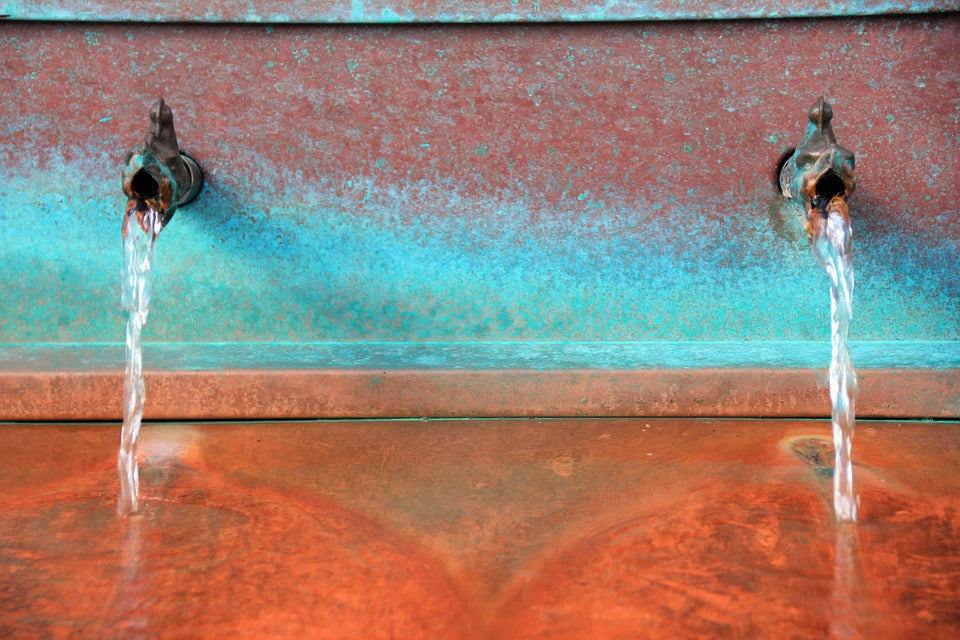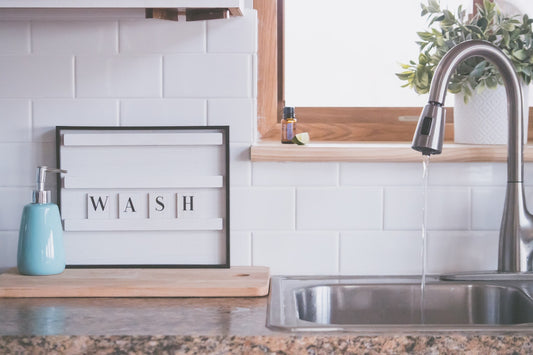Traces of tannin in the water is a recurring problem for property owners with private wells. It is very likely that your well water includes tannins, and while this organic material doesn’t directly affect your health, it can lead to various aesthetic issues. Water contaminated with tannins results in water with a bitter and musty odor. You may also notice a slight color change in the appearance of the water, so it turns musky yellow or brown.
You can remove tannins from water using various methods. This article will guide you on how you can do so. If you’re worried about tannins in the water and need guidance on what to do next, read on.

Source: https://cdn.pixabay.com/photo/2013/10/18/09/09/water-197333_960_720.jpg
What are Tannins?
Tannins are a natural, organic, material that forms as a byproduct of the fermentation process. Water passing through decaying vegetation and peaty soil leads to the formation of tannins. This, in turn, causes the water in your well to turn a yellowish, tea-like color. The color can mean that your water stains the laundry, fixtures, and walls.
Sometimes, tannins leave a weird aftertaste in the water, as well as a strange odor. Other terms for tannins include humic acid or fulvic acid. It is commonly present on the surface of water supplies or shallow wells. Coastal and low-lying areas are highly susceptible to having tannins in the water.
Are Tannins Harmful?
Since tannins aren’t very harmful, they don’t impact your health directly. Nevertheless, they make a mess around your home and cause various issues in the water supply. As mentioned earlier, when tannins leach into the water, the water turns a yellowish color that leaves a stain on your white crockery and laundry. The fact that the water starts to stain everything around your house, including fixtures and other surfaces, can become annoying. This calls for extra cleaning up, which is can be a hassle for homeowners.
Besides tannin leaving a stubborn stain on things around your house, it makes you question the cleanliness and safety of drinking or using the water. Regardless of its safety, you’ll definitely feel uncomfortable cooking or bathing with tannin-infused water. You will have to use other water alternatives, which can be very expensive in the long run.
Tannin leaves a very unpleasant odor, making the water impossible to shower with. No one would want to bathe in water that stinks, regardless of the fact that it’s safe. Showing in water that contains traces of tannins will make definitely make you feel uncomfortable.
Most of the problems that stem from using tannin water concern your home. The moment you start noticing these issues, it’s time to adopt effective measures that remove tannin from the water. Read further below to learn how you can do that.
Ways to Remove Tannin from Water
You can remove tannin from water in different ways, mentioned below are a few common ways you can do so:
Ion Exchange
Ion exchange is a water softening treatment option that helps remove mineral hardness through sodium or salt. Ion exchange also helps in treating and removing different contaminants using water softeners. The ion exchange system takes place in a large tank. You can install this system in your home wherever the main water source is. If you’re using this system, it's best to use styrene or acrylic-based chlorine resin.
Since tannins have a negative charge, resin ion exchange is an effective method to remove them. After the ion exchange, the anion resin will gradually regenerate through salt. This step helps keep the resin bed fresh. This treatment goes on twice a day to prevent organic fouling in the softening resin. Once the system regenerates, it gradually begins the softening ion exchange process.
Oxidation
Oxidation is another effective way to remove tannin from water. Oxidants help remove tannin from the water, which improves the quality and safety of the water. Sometimes, using oxidants to remove tannins may result in reactions with other compounds. This is an issue as it could produce a carcinogen, trihalomethane. To ensure safety, consult a professional about the best oxidant to use in your tannin-removal system.
Reverse Osmosis
Next, you have reverse osmosis, which is a popular tannin-removal system for well water. It’s also great to remove other contaminants from the water as well. People have been using this treatment process for years now because it helps remove different impurities from water. A house reverse osmosis system includes different water filters, a pre-sediment water filter, and a carbon filter. These filters have an effective RO membrane, which ensures the removal of organic and inorganic matter.
Water passes through a carbon filter and RO membrane at high speed before exiting from a faucet. If you use this treatment option, a professional will install the system on your main water line. Using reverse osmosis technology, you can quickly access safe, odor-free drinking water. This is a very effective water treatment as it instantly caters to even the slightest contamination issues present in your water supply. You should consider this tannin-removal method as a first option.

The Bottom-Line
Now that you are aware of how to remove tannins from water, it’s time to decide which form of treatment is the best for you. Remember to keep your convenience in mind. Make sure to check your well water for tannins as you don’t want them affecting your health and the integrity of your home. To select one of the best water filter systems, head over to https://filtersmart.com/.






